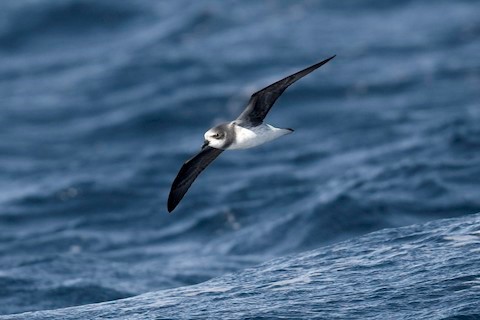Birdfinding.info ⇒ Widespread and common but mostly in remote oceanic regions, especially in the mid-South Atlantic from Gough Island west to the Falkland Islands. It is seen consistently on Antarctic cruises and pelagic trips from: Australia, e.g., Perth, Port Fairy (Victoria), and Eaglehawk Neck (Tasmania); New Zealand; and South Africa, e.g., Cape Town and Durban.
Soft-plumaged Petrel
Pterodroma mollis
Breeds on islands of the southern Atlantic, Indian, and Pacific Oceans and disperses widely over subtropical and temperate seas of that region.
Breeds from approximately September to May in the South Atlantic on Tristan da Cunha and Gough Islands, in the southern Indian Ocean on Prince Edward, Marion, and Crozet Islands, and in the South Pacific on Maatsuyker Island (Tasmania) and the Anitpodes Islands. Gough Island supports approximately 1.5 million pairs, about 75% of the global population.
Disperses throughout the subtropical and temperate zones of the South Atlantic and Indian Oceans. Less numerous and widespread in the South Pacific, where it is known mainly from the southwestern and southeastern portions, although it has also been reported from waters near the Pitcairn Islands.
An extraordinary record from Norway on June 6, 2009, indicates potential for extreme long-distance vagrancy.
Identification
A mid-sized gadfly petrel with gray upperparts, white underparts, dark wings, and most distinctively, a white throat bordered by a gray collar. The collar is usually complete but often thinner and less distinct in the middle.
The upperparts are mostly medium-gray, but the wings are generally darker and browner. Often shows a dark “M” pattern which includes a narrow darker, browner band across the lower back.
The underwing is mostly dark-gray with a paler triangular patagial patch, usually also shows pale-gray or whitish strips or mottling through along the coverts and inner portion of the primaries.
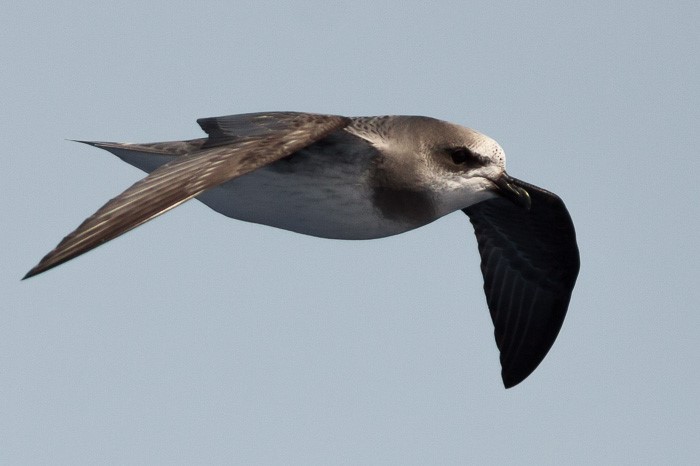
Soft-plumaged Petrel. (Forty Mile Reef, Pitcairn Islands; September 6, 2013.) © David Sargeant
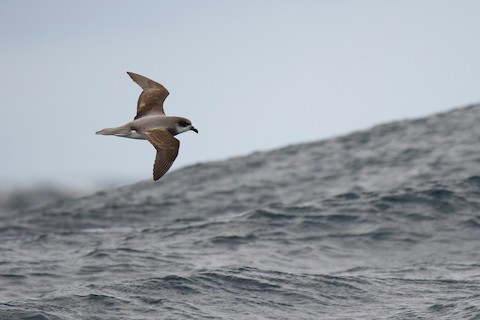
Soft-plumaged Petrel, showing mostly dark-brown upperwings and otherwise gray upperparts. (Offshore from Eaglehawk Neck, Tasmania, Australia; March 15, 2020.) © Peter Vaughan
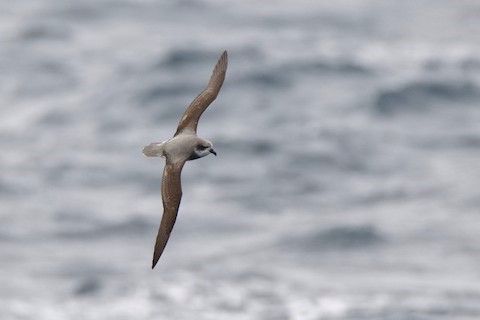
Soft-plumaged Petrel, showing mostly dark-brown upperwings and otherwise gray upperparts. (Offshore from Eaglehawk Neck, Tasmania, Australia; March 15, 2020.) © Peter Vaughan
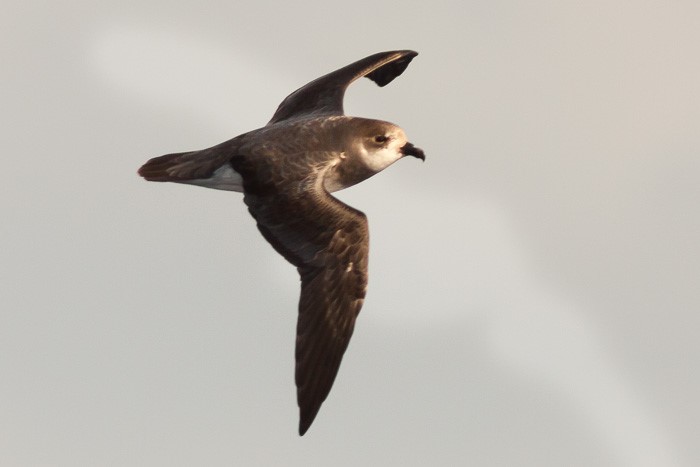
Soft-plumaged Petrel, showing white throat and forehead, thick gray collar, and apparently uniform dark-gray upperparts. (Forty Mile Reef, Pitcairn Islands; September 6, 2013.) © David Sargeant
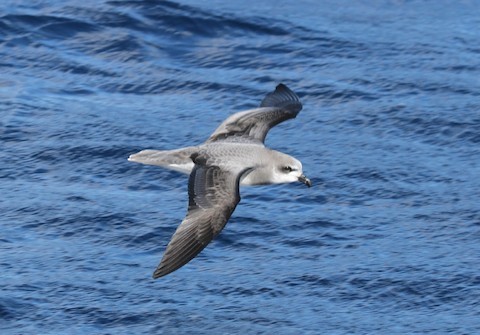
Soft-plumaged Petrel, appearing mostly pale-gray with blackish-gray wings in this lighting. (Offshore from Hillarys, Cockburn, Western Australia; August 4, 2013.) © Clive Nealon
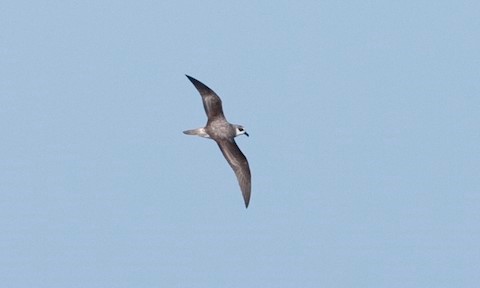
Soft-plumaged Petrel, showing an unusually contrasty pale rump. (South Atlantic Ocean east of the Falkland Islands; January 11, 2009.) © Brian Sullivan
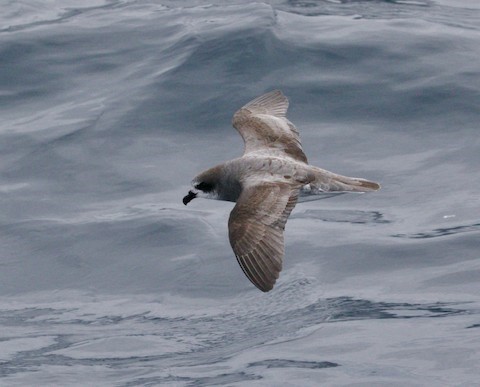
Soft-plumaged Petrel. (Offshore from Port Fairy, Victoria, Australia; December 15, 2019.) © Scott Baker
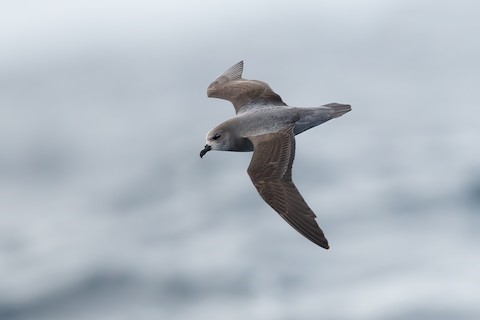
Soft-plumaged Petrel, showing mostly dark-brown upperwings and otherwise gray upperparts. (Offshore from Eaglehawk Neck, Tasmania, Australia; May 18, 2019.) © J.J. Harrison
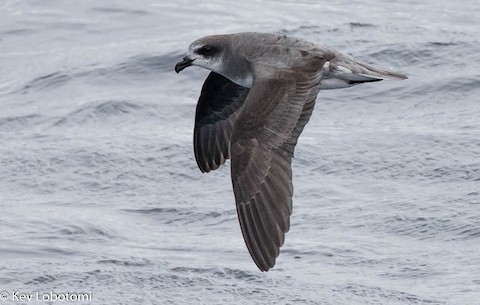
Soft-plumaged Petrel, showing mostly dark-brown upperwings and otherwise gray upperparts. (Offshore from Port Fairy, Victoria, Australia; December 15, 2019.) © Kevin Bartram

Soft-plumaged Petrel. (Offshore from Eaglehawk Neck, Tasmania, Australia; May 27, 2018.) © Robert Hamilton

Soft-plumaged Petrel. (South Atlantic Ocean north of the Falkland Islands; January 7, 2020.) © Alan Henry
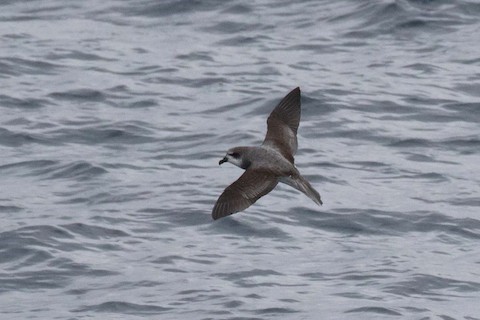
Soft-plumaged Petrel. (Offshore from Eaglehawk Neck, Tasmania, Australia; January 21, 2018.) © Jodi Webber
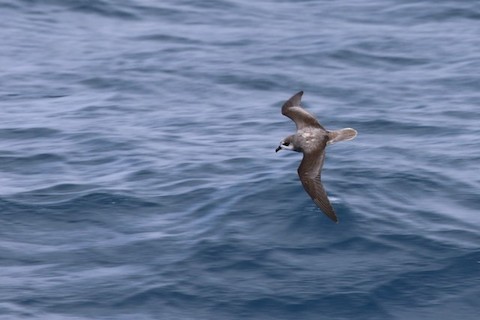
Soft-plumaged Petrel, showing strongly contrasting dark “M” on gray upperparts. (South Atlantic Ocean east of the Falkland Islands; January 8, 2020.) © Alan Henry
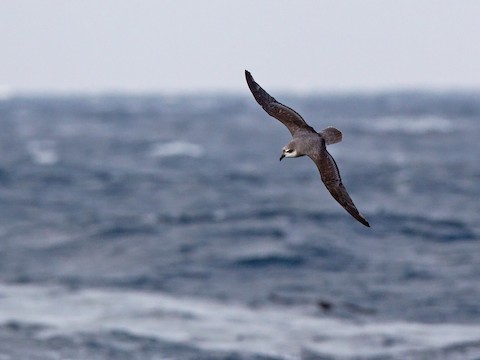
Soft-plumaged Petrel, showing mostly dark-brown upperwings and otherwise gray upperparts. (Offshore from Durban, KwaZulu-Natal, South Africa; August 10, 2014.) © Niall D. Perrins
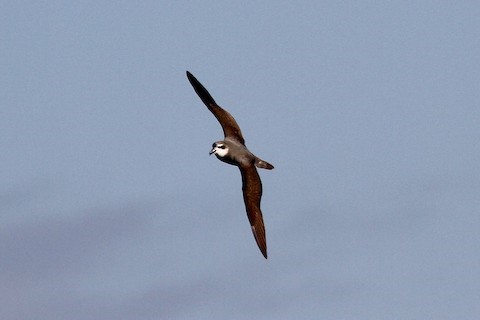
Soft-plumaged Petrel, showing mostly dark-brown upperwings and otherwise gray upperparts. (Offshore from Eaglehawk Neck, Tasmania, Australia; May 18, 2019.) © Robert Hamilton
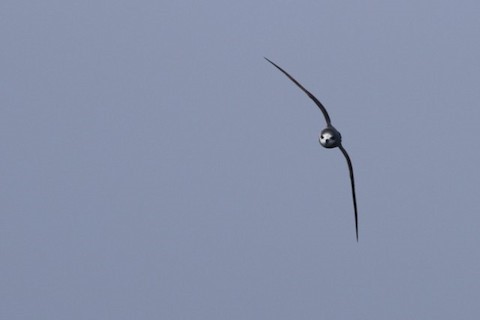
Soft-plumaged Petrel, showing white forehead. (South Atlantic Ocean north of the Falkland Islands; March 3, 2019.) © Alan Henry

Soft-plumaged Petrel, showing white forehead and throat, and gray collar. (Offshore from Eaglehawk Neck, Tasmania, Australia; May 27, 2018.) © Robert Hamilton

Soft-plumaged Petrel. (Offshore from Port Fairy, Victoria, Australia; December 15, 2019.) © Leigh Pieterse

Soft-plumaged Petrel, showing white forehead and throat, and gray collar. (Offshore from Port Stephens, New South Wales, Australia; September 2020.) © M. Roderick
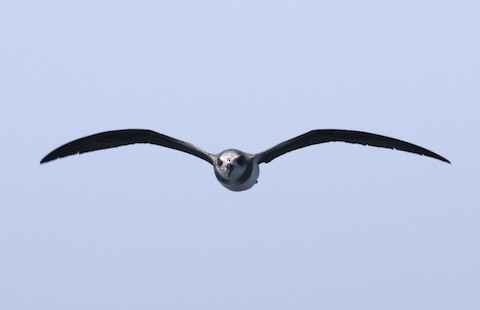
Soft-plumaged Petrel, showing white forehead and throat, and gray collar. (Offshore from Eaglehawk Neck, Tasmania, Australia; November 18, 2017.) © Paul Brooks
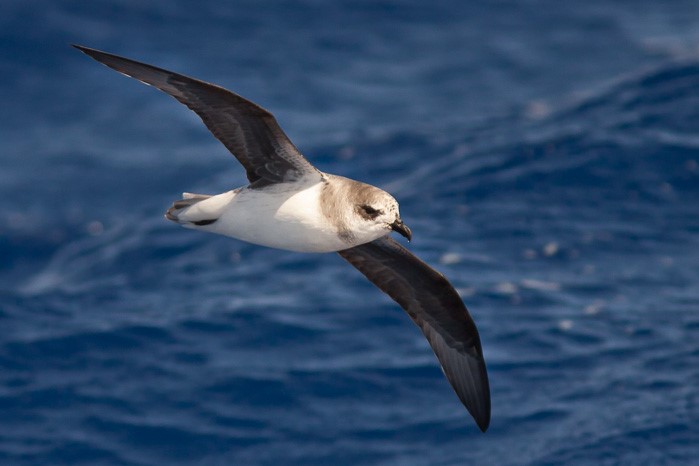
Soft-plumaged Petrel, a pale individual with mostly white face and thin, subtle grayish collar. (Forty Mile Reef, Pitcairn Islands; September 6, 2013.) © David Sargeant
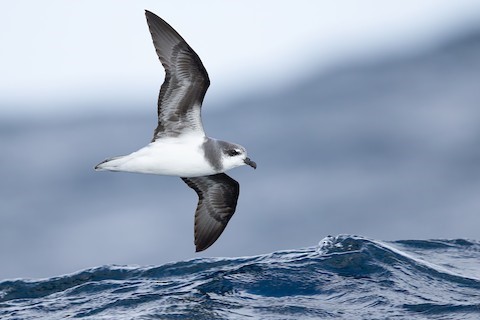
Soft-plumaged Petrel showing dark underwing with whitish central stripe, and white throat with gray collar. (Offshore from Eaglehawk Neck, Tasmania, Australia; May 18, 2019.) © J.J. Harrison

Soft-plumaged Petrel, showing white forehead and throat and gray collar. (Offshore from Port Fairy, Victoria, Australia; December 15, 2019.) © Leigh Pieterse
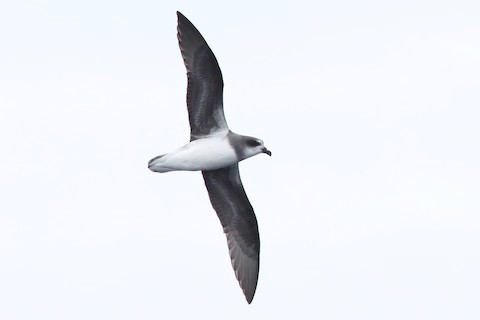
Soft-plumaged Petrel, showing white forehead and throat and gray collar, with mostly dark-gray underwings. (Offshore from Port Fairy, Victoria, Australia; December 15, 2019.) © Leigh Pieterse
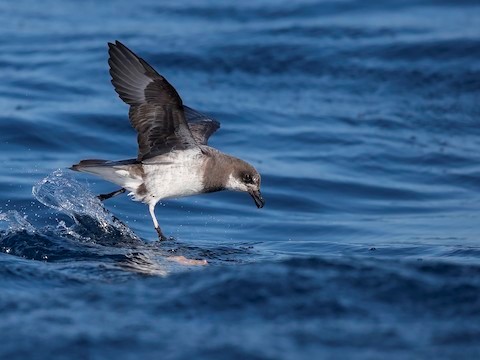
Soft-plumaged Petrel, showing pale-pink legs and black feet. (Offshore from St. Lucia, KwaZulu-Natal, South Africa; July 29, 2017.) © Niall D. Perrins
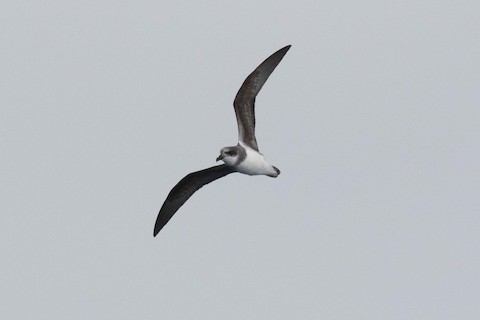
Soft-plumaged Petrel, showing white forehead and throat and gray collar. (Offshore from Eaglehawk Neck, Tasmania, Australia; January 21, 2018.) © Jodi Webber

Soft-plumaged Petrel, showing white forehead and throat and gray collar. (Offshore from Bremer Bay, Western Australia; February 13, 2019.) © Marc Faucher
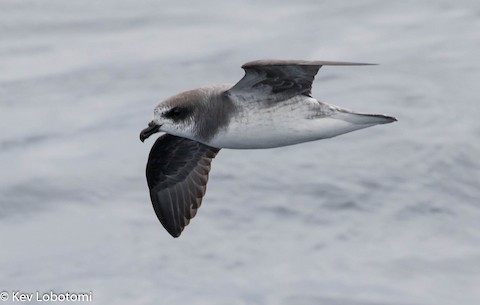
Soft-plumaged Petrel, showing white forehead and throat and gray collar. (Offshore from Port Fairy, Victoria, Australia; December 15, 2019.) © Kevin Bartram
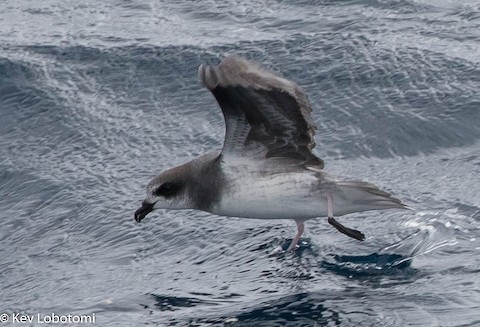
Soft-plumaged Petrel, showing pink legs and black feet. (Offshore from Port Fairy, Victoria, Australia; December 15, 2019.) © Kevin Bartram
Dark Morphs. A small minority of the population (~1% or less overall, but locally higher) are dark morphs, which have mostly uniform gray underparts and mostly dark-gray underwings. They are readily confused with other predominantly gray petrels, but usually have a darker-gray collar.

Soft-plumaged Petrel, dark morph, dorsal view. (Offshore from Eaglehawk Neck, Tasmania, Australia; May 18, 2019.) © Peter Vaughan
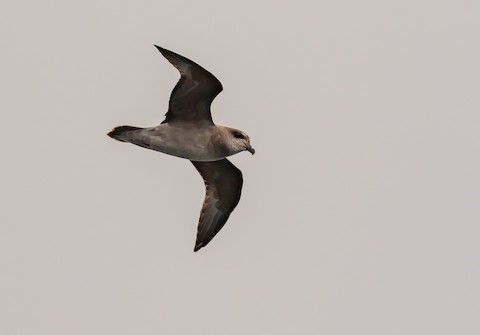
Soft-plumaged Petrel, dark morph showing slightly darker collar. (Offshore from Eaglehawk Neck, Tasmania, Australia; February 1, 2020.) © Paul Brooks
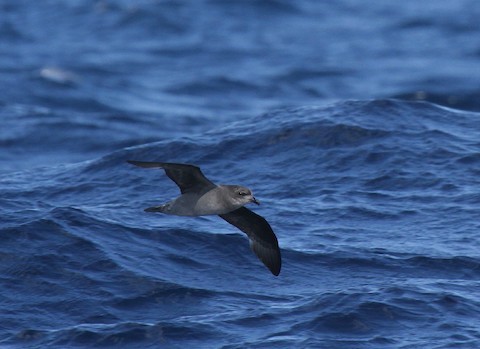
Soft-plumaged Petrel, dark morph showing slightly darker collar. (Offshore from Hillarys, Cockburn, Western Australia; August 4, 2013.) © Clive Nealon

Soft-plumaged Petrel, showing white forehead and throat and gray collar. (Offshore from Port Fairy, Victoria, Australia; December 15, 2019.) © Kevin Bartram
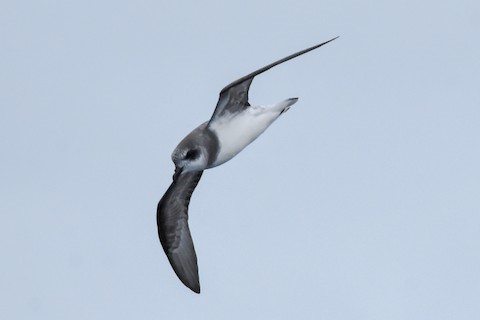
Soft-plumaged Petrel, showing white throat and gray collar. (Perth Canyon, Cockburn, Western Australia; July 28, 2018.) © Geoffrey Groom

Soft-plumaged Petrel, a pale individual with an incomplete collar. (Offshore from Durban, KwaZulu-Natal, South Africa; August 13, 2016.) © Niall D. Perrins

Soft-plumaged Petrel, showing white throat and gray collar. (Offshore from Tutukaka, North Island, New Zealand; July 7, 2018.) © Oscar Thomas
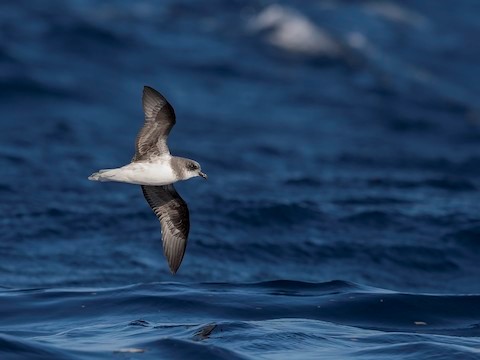
Soft-plumaged Petrel. (Offshore from St. Lucia, KwaZulu-Natal, South Africa; July 29, 2017.) © Niall D. Perrins
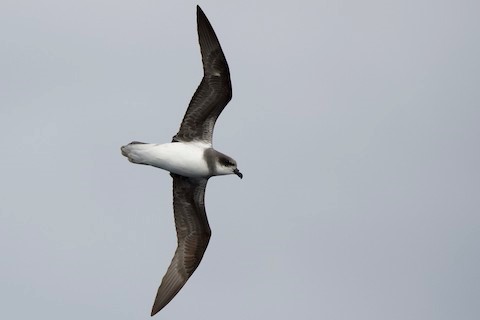
Soft-plumaged Petrel, showing white throat and gray collar, with underwings appearing almost all-dark in this lighting. (Offshore from Eaglehawk Neck, Tasmania, Australia; March 15, 2020.) © Peter Vaughan
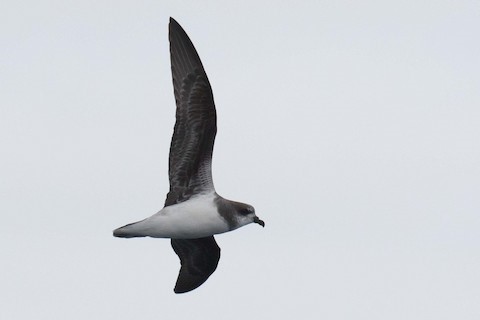
Soft-plumaged Petrel, showing mostly dark-gray underwings. (Offshore from Eaglehawk Neck, Tasmania, Australia; January 21, 2018.) © Jodi Webber
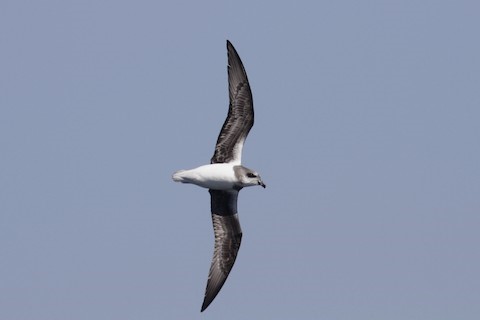
Soft-plumaged Petrel, showing intricately patterned blackish and pale-gray underwings. (Offshore from Eaglehawk Neck, Tasmania, Australia; November 18, 2017.) © Paul Brooks
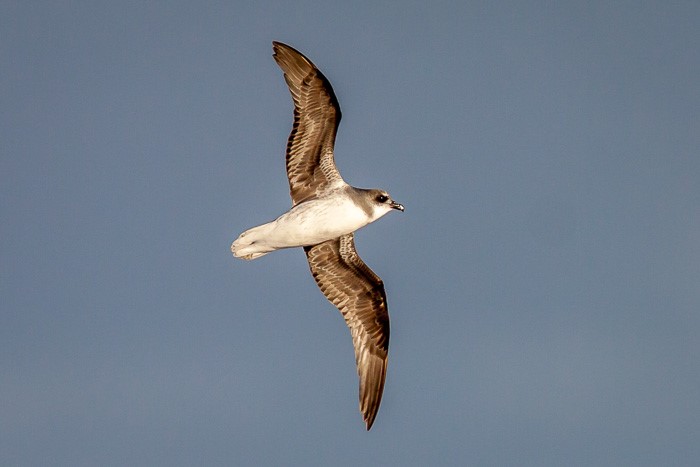
Soft-plumaged Petrel, showing mostly dark-gray underwings, white throat, and partial gray collar. (Forty Mile Reef, Pitcairn Islands; September 6, 2013.) © David Sargeant

Soft-plumaged Petrel with gray scaling on face and throat. (Offshore from Myall Lakes National Park, New South Wales, Australia; October 15, 2017.) © Alex Berryman
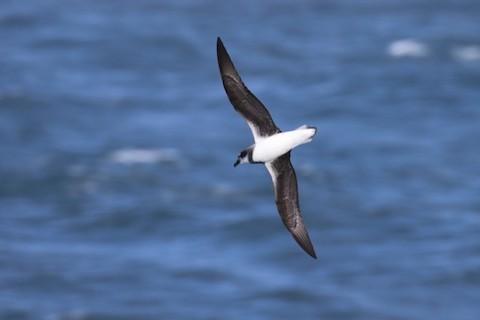
Soft-plumaged Petrel, showing contrasting white throat and dark-gray collar, white patagial bars and blackish-gray underwings with subtly paler central stripe. (South Atlantic Ocean north of the Falkland Islands; March 4, 2019.) © Alan Henry

Soft-plumaged Petrel, showing mostly dark-gray underwings, white throat, gray collar, and unusually gray forehead. (Forty Mile Reef, Pitcairn Islands; September 6, 2013.) © David Sargeant

Soft-plumaged Petrel, showing white forehead and throat and gray collar, with mostly dark-gray underwings. (Perth Canyon, Cockburn, Western Australia; August 21, 2016.) © Daniel Mantle

Soft-plumaged Petrel, showing blackish-gray underwings with subtly paler central stripe. (Offshore from Eaglehawk Neck, Tasmania, Australia; June 8, 2019.) © Peter Vaughan
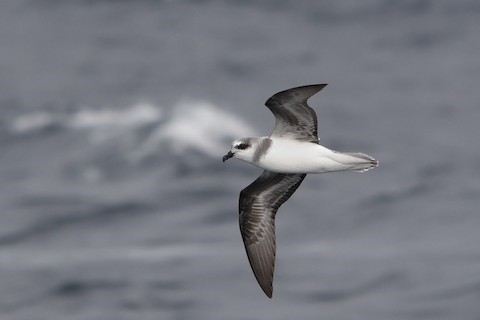
Soft-plumaged Petrel, showing 50-50 blackish and pale-gray underwings. (Offshore from Portland, Victoria, Australia; April 12, 2015.) © Owen Lishmund

Soft-plumaged Petrel, showing mostly dark-gray underwings with pale-gray central stripe. (Offshore from Eaglehawk Neck, Tasmania, Australia; May 18, 2019.) © Peter Vaughan
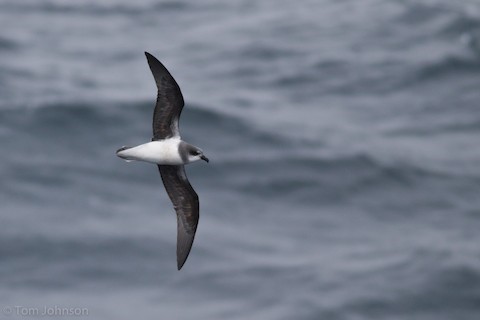
Soft-plumaged Petrel, showing mostly dark-gray underwings. (Offshore from Coronation Island, South Orkney Islands; February 13, 2018.) © Tom Johnson
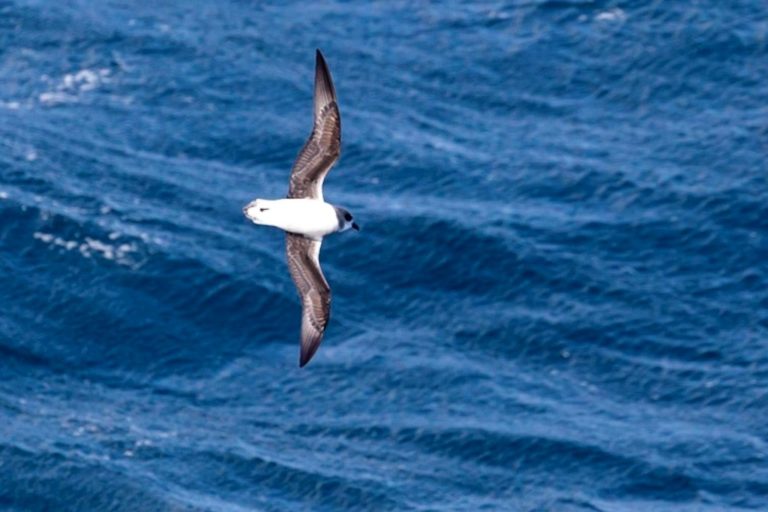
Soft-plumaged Petrel, showing mostly pale-gray underwings with darker carpal bar—in this lighting. (Mid-South Atlantic Ocean, east of Cabo Raso, Argentina; February 24, 2019.) © Ken Chamberlain
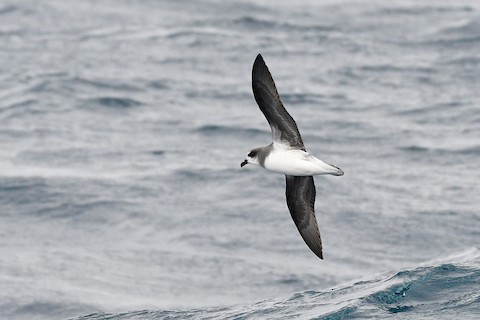
Soft-plumaged Petrel, showing mostly dark-gray underwings with pale-gray central stripe. (Offshore from Port Fairy, Victoria, Australia; December 15, 2019.) © Jacques Erard
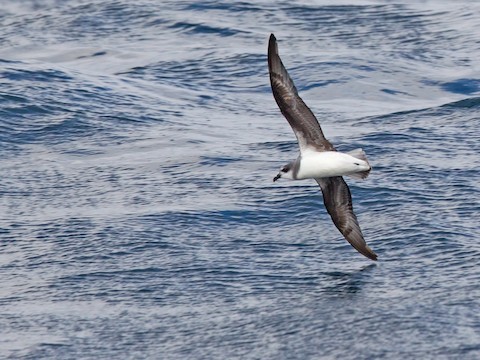
Soft-plumaged Petrel, showing 50-50 blackish and pale-gray underwings. (Offshore from Durban, KwaZulu-Natal, South Africa; August 10, 2014.) © Niall D. Perrins
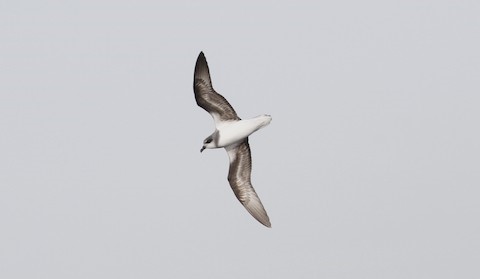
Soft-plumaged Petrel, showing mostly pale-gray underwings with darker carpal bar. (Offshore from Eaglehawk Neck, Tasmania, Australia; May 27, 2018.) © Paul Brooks
Cf. Zino’s, Desertas, and Cape Verde Petrels. The Soft-plumaged Petrel of the southern oceans was traditionally considered conspecific with Zino’s, Desertas, and Cape Verde Petrels of the Atlantic Ocean. Desertas Petrel winters in the South Atlantic at latitudes where Soft-plumaged is very common, so they apparently overlap broadly, and Soft-plumaged was recently photographed in Norwegian waters, so it clearly has the potential to occur throughout the ranges of Zino’s, Desertas, and Cape Verde.
Soft-plumaged differs from the others in two principal features. First, Soft-plumaged usually has a complete gray collar at the base of its throat, whereas the others have a gray cowl that rarely extends far down the sides of the neck. Second, on Soft-plumaged the rump and tail are approximately the same shade of gray as the upper back, whereas on the others the rump and tail are much paler.
In addition, Soft-plumaged usually has a mostly white forehead, whereas the others usually have gray foreheads—but forehead color seems to vary within each species to some extent. Finally, Soft-plumaged typically shows more extensive white or plae-gray on the underwings, usually extending to the bases of the primaries. In this respect, Zino’s can be similar, but usually has a whitish stripe limited to the coverts. Desertas and Cape Verde are more consistently dark-gray over the majority of the underwing.
Cf. Black-winged Petrel. Soft-plumaged and Black-winged Petrels overlap across a wide swath of the South Pacific and potentially also in the Indian Ocean, and could easily be mistaken for one another under some conditions. The most consistent difference between them is the underwing pattern: mostly dark on Soft-plumaged versus bold black and white stripes on Black-winged. Soft-plumaged typically has a full gray collar and white throat, whereas Black-winged usually has only a partial collar or cowl, but it sometimes shows a full collar. The upperparts of the two species are extremely similar—the only consistent difference is that Black-winged usually has a mostly blackish tail.
Notes
Polytypic species consisting of two recognized subspecies. Formerly considered conspecific with Zino’s, Desertas, and Cape Verde Petrels (P. madeira, deserta, and feae) which breed in Macaronesia.
References
BirdLife International. 2018. Pterodroma mollis. The IUCN Red List of Threatened Species 2018: e.T22698080A132623309. https://dx.doi.org/10.2305/IUCN.UK.2018-2.RLTS.T22698080A132623309.en. (Accessed October 8, 2020.)
de la Peña, M.R., and M. Rumboll. 1998. Birds of Southern South America and Antarctica. Princeton University Press.
eBird. 2020. eBird: An online database of bird distribution and abundance. Cornell Lab of Ornithology, Ithaca, N.Y. http://www.ebird.org. (Accessed October 8, 2020.)
Harrison, P. 1983. Seabirds: An Identification Guide. Houghton Mifflin, Boston.
Howell, S.N.G., and K. Zufelt. 2019. Oceanic Birds of the World. Princeton University Press.
Onley, D., and P. Scofield. 2007. Albatrosses, Petrels & Shearwaters of the World. Princeton University Press.
Sinclair, I., P. Hockey, W. Tarboton, and P. Ryan. 2011. Birds of Southern Africa (Fourth Edition). Random House Struik (Pty) Ltd. Cape Town, South Africa.
Wiltshire, A., S. Hamilton, and N. Brothers. 2005. First record of Soft-plumaged Petrels, Pterodroma mollis, breeding in Australia. Emu 104:363-368.
Xeno-Canto. 2020. Soft-plumaged Petrel – Pterodroma mollis. https://www.xeno-canto.org/species/Pterodroma-mollis. (Accessed October 8, 2020.)
